Conference Report on IEEE BIOSIG 2022
The 21st edition of the International Conference of the Biometrics Special Interest Group (BIOSIG) took place at Fraunhofer IGD in Darmstadt, Germany from September 14 to 16. A total number of 82 participants attended BIOSIG-2022 on the first edition in presence after the virtual series of 2020 and 2021. The conference featured 19 oral presentations and 16 poster presentations, as well as 3 keynotes by Uwe Seidel (Bundeskriminalamt, BKA), Luisa Verdoliva (University Federio II of Naples), and Claude Bauzou (Idemia). This event was the last part of the Darmstadt Biometric Week.
The conference was opened with a session on biometric template protection and de-identification. Both current issues with the practical application of standardised unlinkability metrics and the use of the newest NIST quantum resistance cryptographic schemes for face recognition were discussed. The session was followed by presentations focused on morphing attack detection, a topic further discussed on Friday.
The first keynote talk was given by Uwe Seidel, from the BKA.
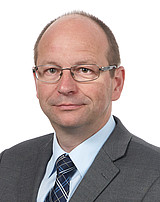 | He addressed the recent developments and challenges of identity documents, in the presence of ever-increasing criminality and fake documents. He showed the vulnerabilities of current passports and discussed the next steps to increase their security from a digital and physical perspective. To that end, different scenarios were presented, where the smartphone can be used as a security token, in combination or even deprecating physical passports as we know them. The advantages and disadvantages of all scenarios were presented, and the feasibility of implementing them in the near future was also discussed. |
Security of biometric systems remained the focus of the next session, where backdoor and reconstruction attacks were presented, together with methods to identify them based on anomaly detection. The last presentations of the day dealt with biometric quality. First, general thoughts on how to define quality metrics based on the concept of utility were discussed. Then, finger vein quality and the used of minutiae quality for reducing the workload in fingerprint identification scenarios were explored. Before the social event, further conference contributions were presented in the poster session. The topics included different aspects of vascular biometrics, face, fingerprint, iris and gait recognition, biometric quality, ageing, and presentation attack detection. | 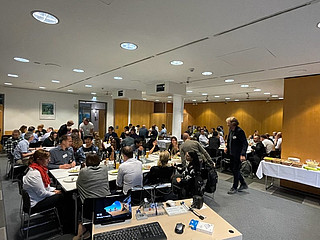 |
 | Friday started with the keynote talk of Luisa Verdoliva, from the University Federico II of Naples, on deepfake detection. She reviewed different techniques in the state of the art, emphasising the benefits and issues of each approach and the challenges posed by the high quality of the deepfakes. Among the pool of techniques at hand, she focused on those that enable domain generalisation, as they show a higher potential for the future. She also discussed existing databases available to researchers to advance in this field, including her own works and contributions. |
The keynote was followed by two presentations on the legal aspects of privacy protection and the GDPR, on a more legal rather than technical perspective. Issues on the writing of the regulation were exposed, and the need for further clarifications and more precise vocabulary was highlighted. In subsequent session, facial morphing was further explored, both the creation of sophisticated morphed facial images and the automatic detection of attacks launched with such images.
Fingerprint recognition was the leading theme of the third and fourth sessions of the day. First a real case study from the police with contactless fingerprint acquisition was described. Then, neonate fingerprint recognition was discussed, including the presentation of a new and enhanced capture device. After the lunch break, a new method based on GANs for contact vs. contact-less fingerprint comparison was presented, and the topics of fingerprint variability and cross-device finger vein recognition were discussed.
The conference concluded with the keynote talk of Claude Bauzou, from Idemia.
She explained how, in the context of the iMARS research funded project, a group of industrial actors are working together to find innovative solutions to detect ID document fraud using mobile platforms. The discussed work focused on morphing attack detection, carried out in collaboration not only with other companies but also with several universities within the EU. Not only the techniques developed were discussed at high level, with results, but also an emphasis was put on the industrial viewpoint of research and how companies can benefit from such joint research efforts. | 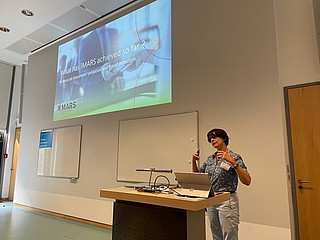 |
As in previous editions of the BIOSIG conference, participants of the conference themselves voted for the best paper and the best poster presented at the conference. The BIOSIG 2022 “Best Paper Award” was given to Una Kelly (University of Twente) for the interesting presentation “Worst-Case Morphs: a Theoretical and a Practical Approach“. The winner of the “Best Poster Award” was Marcel Grimmer (NTNU) for the poster “Analyzing the Performance Impact of Ageing in Face Recognition with Synthetic Data”.
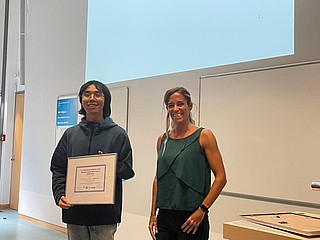 | 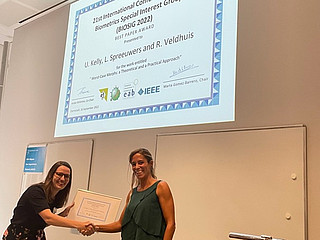 |
The BIOSIG conference was preceded by several satellite events in the Darmstadt Biometric Week:
- TeleTrusT Biometric Working Group Meeting
- EAB Research Projects Conference (EAB-RPC) 2022
- EAB General Assembly
- EAB Biometrics Max Snijder, Research, and Industry Awards 2022
The 2022 BIOSIG conference was jointly organized by the Competence Center for Applied Security Technology (CAST) and the special interest group BIOSIG of the Gesellschaft für Informatik e.V. (GI).
The conference was technically co-sponsored by IEEE Biometric Council and the papers will be added to IEEE Xplore.
Next year, the BIOSIG conference is planned to take place between September 20 to 22, 2023 in Darmstadt, Germany.
For more details on the next edition of the conference, see: www.biosig.org